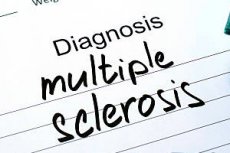New publications
Quiet progression means a "radical break" in the understanding of multiple sclerosis
Last reviewed: 02.07.2025

All iLive content is medically reviewed or fact checked to ensure as much factual accuracy as possible.
We have strict sourcing guidelines and only link to reputable media sites, academic research institutions and, whenever possible, medically peer reviewed studies. Note that the numbers in parentheses ([1], [2], etc.) are clickable links to these studies.
If you feel that any of our content is inaccurate, out-of-date, or otherwise questionable, please select it and press Ctrl + Enter.

Progression of disability independent of relapses (PIRA), sometimes referred to as "silent progression", has become a key integrating concept in the modern view of multiple sclerosis (MS).
"The observation that progression can occur without prior relapses in early relapsing-remitting multiple sclerosis (RRMS) has now been confirmed in several cohort studies and is recognized as the most common cause of progression in relapsing patients," said Bruce Cree, MD, PhD, MAS, of the University of California, San Francisco (UCSF). "This observation represents a fundamental change in our understanding of MS."
Quiet progression
In 2019, Cree and colleagues proposed the term "silent progression" to describe the accumulation of disability unrelated to inflammatory activity in MS, based on data from the UCSF EPIC prospective cohort.
The team studied patients with relapsing MS with long-term follow-up and found that relapses were associated with a temporary increase in disability over 1 year (P=0.012) but not with confirmed disability progression (P=0.551).
Furthermore, relative brain volume decreased more rapidly in patients with progressive disability compared with patients who remained stable.
The high efficacy of MS therapy against clinical attacks has made it possible to assess long-term outcomes when elements of focal disease have been suppressed, the researchers noted. This has opened the door to a fundamental change in thinking.
"Previously, the worsening of disability in the early stages of the disease was thought to be due to relapses, and only later was it thought to be hidden after significant accumulation of disability," Cree noted.
"This two-stage model is wrong," he stressed. "What we call secondary progressive MS is very likely the same process that occurs when relapsing activity is suppressed by highly effective anti-inflammatory drugs."
"In other words, secondary progressive MS is not secondary - progressive worsening of disability occurs in parallel with relapsing activity and can be detected early in the disease," Cree said.
Definition of PIRA
In 2023, researchers led by Ludwig Kappos, MD, of the University of Basel in Switzerland, proposed a harmonized definition of PIRA for general use based on a systematic review of the PIRA literature.
"The first descriptions of PIRA were followed by numerous studies in different patient groups to better understand this new phenomenon," said co-author Jannis Müller, MD, also of the University of Basel.
"However, there was no uniform definition of PIRA, making it difficult to compare and interpret studies," he continued. "We aimed to summarize current knowledge about this phenomenon and propose uniform diagnostic criteria for identifying PIRA."
Kappos and colleagues based their criteria on a literature review of 48 studies. They estimated that PIRA occurred in approximately 5% of patients with relapsing-remitting MS each year, accounting for 50% or more of the disability accumulation in RRMS. In contrast to relapse-related impairment, the proportion of PIRA increased with age and disease duration.
The review confirmed earlier findings by Cree and others. "PIRA accounts for much of the increase in disability from the earliest stages of MS," Muller said.
"This challenges the traditional division of MS into relapsing-remitting and progressive phenotypes and supports the view that both mechanisms are present in all patients and at all stages, with overlap between the inflammatory and neurodegenerative aspects of the disease," he continued. Recognizing this phenomenon could help develop targeted and personalized therapies, he added.
Recommendations for the diagnosis of PIRA
Kappos et al recommended using a composite measure that includes upper limb function (eg, 9-hole test), gait speed (25-foot test), and cognitive testing (information processing speed measured by the Symbol-Digit Test).
Other recommendations included the use of datasets with scheduled, standardized clinical assessments at intervals of no more than 12 months and the interpretation of new or enlarging T2 lesions or gadolinium-enhancing lesions as signs of acute activity temporally related to a clinical event only if images are obtained within 90 days.
Criteria for defining or diagnosing PIRA in both relapsing-remitting and progressive MS should include a baseline reference value updated with clinical events, classification of deterioration as due to PIRA only if distinct from investigator-confirmed relapses, confirmation of demonstrable worsening of disability 6-12 months after the initial deterioration, and a requirement for sustained PIRA for 12-24 months, Kappos and colleagues added.
Conclusion
Since the introduction of the term "silent progression," PIRA has been studied from a variety of perspectives. One study found that MS patients who developed PIRA soon after their first demyelinating event were more likely to experience poor long-term disability outcomes. Another study reported that pediatric-onset MS patients developed PIRA when they were relatively young. Researchers have also suggested that serum glial fibrillary acidic protein (GFAP) may be a prognostic biomarker for PIRA, as is spinal cord atrophy.
Understanding PIRA has profound implications, Cree noted.
"If a drug can effectively prevent the onset of PIRA in relapsing MS, its use will likely prevent the onset of what we call secondary progressive MS," he said. "Clinical trials targeting PIRA as a primary endpoint have not yet been successfully conducted, but represent a new frontier for assessing therapeutic efficacy."
